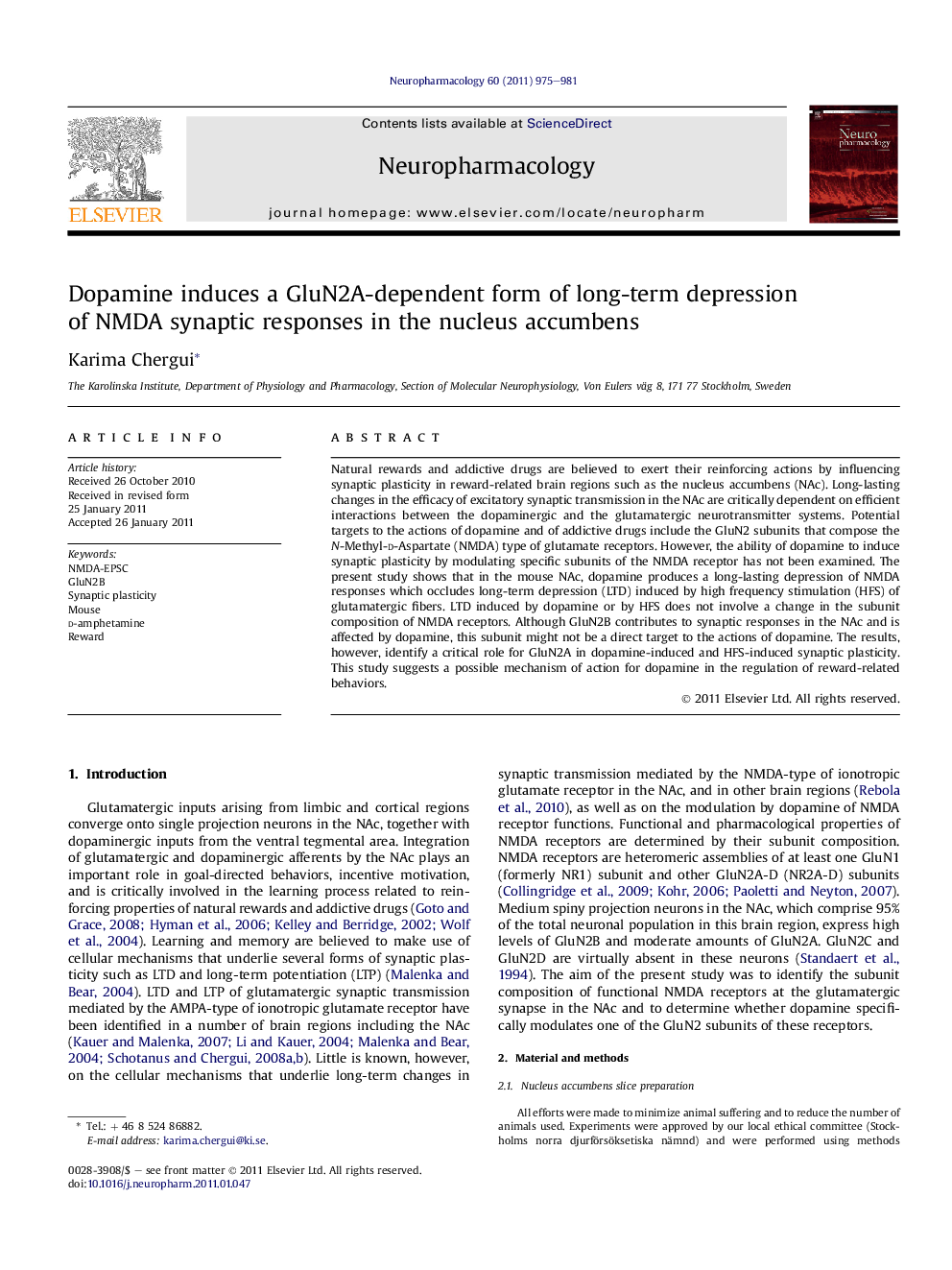| Article ID | Journal | Published Year | Pages | File Type |
|---|---|---|---|---|
| 2493986 | Neuropharmacology | 2011 | 7 Pages |
Natural rewards and addictive drugs are believed to exert their reinforcing actions by influencing synaptic plasticity in reward-related brain regions such as the nucleus accumbens (NAc). Long-lasting changes in the efficacy of excitatory synaptic transmission in the NAc are critically dependent on efficient interactions between the dopaminergic and the glutamatergic neurotransmitter systems. Potential targets to the actions of dopamine and of addictive drugs include the GluN2 subunits that compose the N-Methyl-d-Aspartate (NMDA) type of glutamate receptors. However, the ability of dopamine to induce synaptic plasticity by modulating specific subunits of the NMDA receptor has not been examined. The present study shows that in the mouse NAc, dopamine produces a long-lasting depression of NMDA responses which occludes long-term depression (LTD) induced by high frequency stimulation (HFS) of glutamatergic fibers. LTD induced by dopamine or by HFS does not involve a change in the subunit composition of NMDA receptors. Although GluN2B contributes to synaptic responses in the NAc and is affected by dopamine, this subunit might not be a direct target to the actions of dopamine. The results, however, identify a critical role for GluN2A in dopamine-induced and HFS-induced synaptic plasticity. This study suggests a possible mechanism of action for dopamine in the regulation of reward-related behaviors.
► GluN2A and GluN2B contribute to functional NMDA receptors in the nucleus accumbens. ► Synaptic and perisynaptic NMDA receptors have a similar subunit composition. ► Dopamine induces a long-lasting inhibition of NMDA responses. ► Dopamine occludes LTD induced by high frequency stimulation. ► LTD induced by dopamine and by HFS requires GluN2A.
